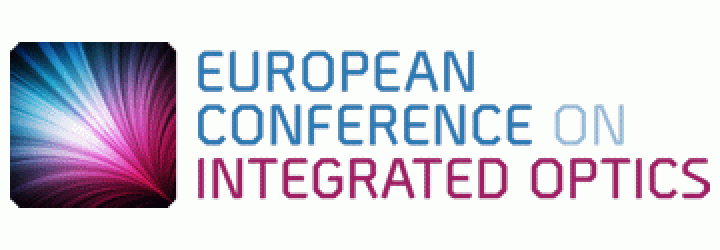The effect of photonic integration on the evolution of communication systems
Hercules AVRAMOPOULOS1
ICCS/NTUA, Zografou, 15780, Greece
hav@mail.ntua.gr
Over the last decades, the ubiquitous necessity for high-bandwidth and low-cost has instigated the penetration of photonic integrated circuits (PICs) though all the major application areas of Photonics, providing the speed, cost and integration density credentials required for preventing the imminent capacity crunch. Ranging from the high-speed low-cost IM/DD links of datacenter networks to the spectrally-efficient flexible coherent systems of the metro and core, the industry is seeking PIC-based solutions offering extensive functionalities, low cost and manufacturability. In this context, III-V materials present their inherent competence to provide a complete set of functionalities, such as light emission, modulation and detection while Silicon Photonics (SiPh) bear the promise of capitalizing on the enormous investments and progresses in CMOS fabs.
Heterogeneously Integrated III-V/SOI DBR Laser with Over 7 nm Continuous Wavelength Tuning Range
Sören DHOORE, Gunther ROELKENS, Geert MORTHIER
Photonics Research Group, INTEC, Ghent University
imec, Ghent, 9000, Belgium
Center for Nano- and Biophotonics (NB-Photonics), Ghent University
Ghent, 9000, Belgium
Soren.Dhoore@UGent.be
Many tele- and datacom applications require single-wavelength tunable lasers with easy wavelength control and sufficient tuning range. Such lasers can for instance be used in WDM-based optical networks or to replace fixed wavelength distributed feedback (DFB) lasers. In recent years there has been a lot of interest in tunable lasers heterogeneously integrated on the silicon-on-insulator (SOI) platform. Several heterogeneously integrated III-V/SOI tunable distributed Bragg reflector (DBR) and DFB lasers have already been demonstrated. DBR-types typically employ a single or double silicon ring with heaters as wavelength-selective and tunable element. In recent work we demonstrated a discretely tunable sampled grating (SG)-DFB laser with a discontinuous tuning range of more than 55 nm.
De-multiplexing coherent optical combs within Photonic Integrated Circuits
Maryam SHAYESTEH, Kevin SHORTISS, William COTTER, Padraic E. MORRISEY, Alison. H. PERROT, Niall. P. KELLY, Frank. H. PETERS
Tyndall National Institute, Lee Maltings, Dyke Parade, Cork
T12R5CP, IRELAND
University College Cork, Cork, T12 YN60, IRELAND Maryam.shayesteh@tyndall.ie
Significant research effort has been directed towards successfully demultiplexing the coherent optical combs for use in Coherent Wavelength Division Multiplexing (CoWDM) technologies. Photonic Integrated Circuits (PICs) are a low cost and energy efficient solution. The selective amplification attainable of a target optical comb line via injection locking has already been demonstrated [1]. Here, we investigate the effect device gain has on the amplification of the target and neighbouring comb lines, in an attempt to maximize the side mode suppression ratio (SMSR) achievable using a MMI and slotted Fabry-Perot device. The schematic of the setup consisting of Tunable laser source (TLS), Mach-Zehender Modulator (MZM), Polarization controller (PC), Erbium doped fibre amplifier (EDFA), Photonic integrated circuit (PIC), and the optical spectrum analyzer (OSA) as well as the device under test are presented in Fig. 1. The slave SFP laser was biased to slightly above threshold where it was operating as a multimode laser diode. MMI is biased so that it is transparent and not absorbing the light.
Monolithic tunable lasers for low cost DWDM networks
Jian-Jun He, Sen Zhang, Jianjun Meng, Xiaohai Xiong, Huabin Xing, Hushan Jin, Di Zhong, Jiasheng Zhao
State Key Laboratory of Modern Optical Instrumentation, Centre for Integrated Optoelectronics, College of Optical Science and Engineering, Zhejiang University, Hangzhou 310027, China
Lightip Technologies, Co. Ltd., 11. Xi-Yuan Eighth Road
Hangzhou 310030, China
jjhe@zju.edu.cn
Low-cost tunable lasers are key enablers for next-generation dense wavelength division multiplexing (DWDM) based access and metro networks. At present, tunable lasers are mostly deployed in long-haul optical transmission systems due to their high cost resulting from fabrication and operation complexity for structures such as sampled grating distributed Bragg reflector (SGDBR). For wide deployment of the WDM technology in metro, access, and data center networks, the cost reduction of tunable lasers has become a key issue. Recently, a simple and compact tunable V-cavity laser (VCL) has been proposed and demonstrated. By using a specially designed halfwave coupler between two Fabry-Perot lasers, a widely-tunable single-mode laser with high side mode suppression ratio (SMSR) is achieved without requiring complex gratings. Discrete wavelength tuning up to 50 channels at 100 GHz spacing has been demonstrated experimentally with a simple tuning algorithm. Single-electrode controlled fast wavelength tuning in the order of ~10ns has also been achieved by using a quantum well intermixed tuning section.

